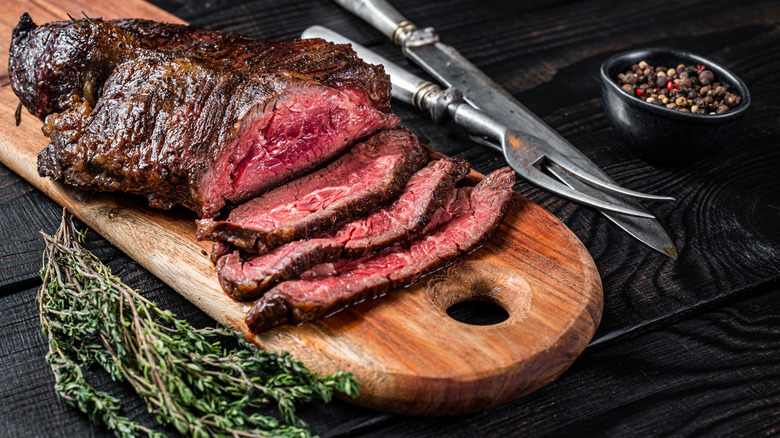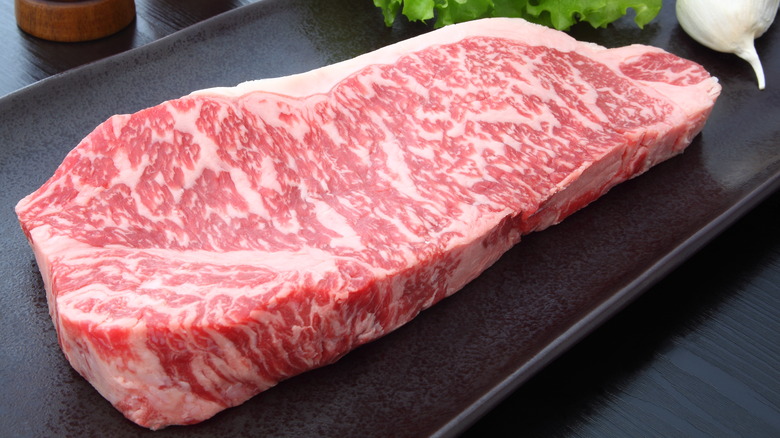Why You Won't Always Get The Best Flavor From The Most Tender Meat
The term "meat" covers a wide spectrum of delicacies. As History mentions, many humans likely gravitate toward pork ribs, cheeseburgers, and salami sandwiches because of our ancestors. Mother Nature was once abundant with fruits, seeds, and tubers, which were the main food groups of hominins. But eventually, hominins had to adapt to warmer weather conditions, which became the foundation for grasslands. Since plants, at this point, became out of the question, hominins turned to the next best thing: meat from animal carcasses within the grasslands. At first, they didn't eat much meat, but as time passed, it became an everyday staple. And for many people nowadays, meat continues to serve as that same everyday staple, providing nutrition and savory flavors that keep us coming back for more.
And speaking of savory flavors, this is synonymous with the term "umami," which is our fifth basic taste, via The Poultry Site. Umami is found in cheese products, tomatoes, and of course, meat and fish, per the Umami Information Center. So when you eat something like a tomahawk steak, umami flavors coat the tongue and make us salivate even more. So aside from our ancestry, umami is another reason why many people love meat.
But as we know, not all types of meat are equal. Some have better flavor. Some are more tender. And more often than not, these two concepts of "flavor" and "tenderness" are seen as synonymous with each other, but The Culinary Pro believes otherwise.
It's not about tenderness, it's about fat
As The Culinary Pro discusses, tenderness and flavor are two separate terms and should be treated as such. So first, let's talk about tenderness. The easiest way to think about tenderness is via the term "texture," as mentioned by Meat and Muscle Biology. So typically, if a cut of meat is tough and chewy, it's not very tender. Conversely, if a different cut of meat has more of a "melt in your mouth" texture that's soft yet firm, it's considered tender. Certain cooking methods may come to mind at this point, but as The Culinary Pro explains, different things like breed and quality grade play important roles too.
Flavor, on the other hand, comes from how a food item smells and tastes, as Science of Cooking describes. Regarding meat, animal fat is one of the biggest influences on flavor, as The Culinary Pro explains. Take a piece of steak, for example. If the fat is only on one side, you won't be able to taste it with every bite, per 177 Milk Street. But if a steak is marbled, then that fat is more widespread throughout the meat, which may make the steak taste better.
Perhaps the best example comes from The Culinary Pro, which spotlights tenderloin steak. You can use various cooking methods to make tenderloin steak tender, but because it doesn't have much intramuscular fat (per Steak School), it may be less flavorful than other steaks.

